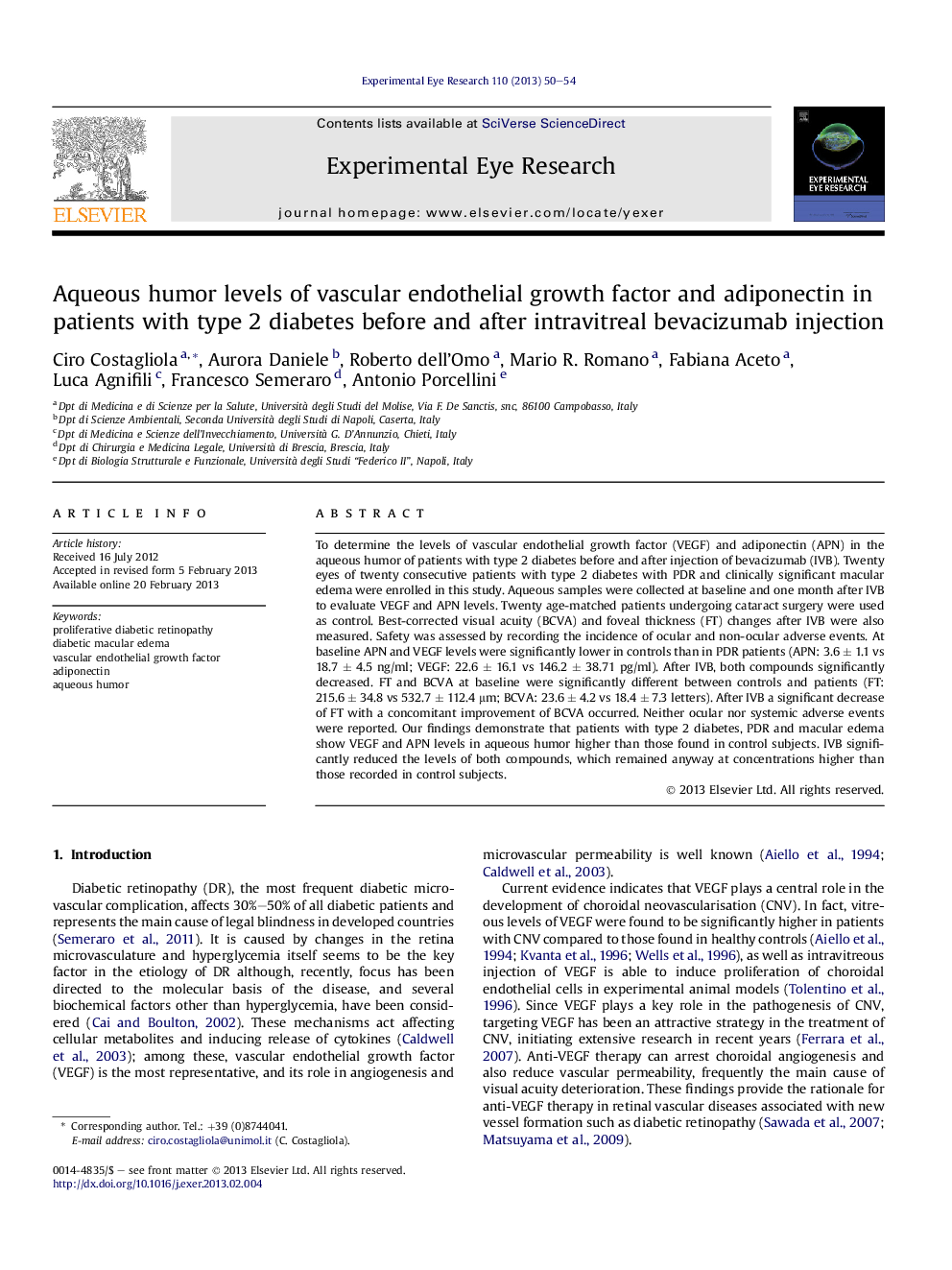| Article ID | Journal | Published Year | Pages | File Type |
|---|---|---|---|---|
| 4011237 | Experimental Eye Research | 2013 | 5 Pages |
To determine the levels of vascular endothelial growth factor (VEGF) and adiponectin (APN) in the aqueous humor of patients with type 2 diabetes before and after injection of bevacizumab (IVB). Twenty eyes of twenty consecutive patients with type 2 diabetes with PDR and clinically significant macular edema were enrolled in this study. Aqueous samples were collected at baseline and one month after IVB to evaluate VEGF and APN levels. Twenty age-matched patients undergoing cataract surgery were used as control. Best-corrected visual acuity (BCVA) and foveal thickness (FT) changes after IVB were also measured. Safety was assessed by recording the incidence of ocular and non-ocular adverse events. At baseline APN and VEGF levels were significantly lower in controls than in PDR patients (APN: 3.6 ± 1.1 vs 18.7 ± 4.5 ng/ml; VEGF: 22.6 ± 16.1 vs 146.2 ± 38.71 pg/ml). After IVB, both compounds significantly decreased. FT and BCVA at baseline were significantly different between controls and patients (FT: 215.6 ± 34.8 vs 532.7 ± 112.4 μm; BCVA: 23.6 ± 4.2 vs 18.4 ± 7.3 letters). After IVB a significant decrease of FT with a concomitant improvement of BCVA occurred. Neither ocular nor systemic adverse events were reported. Our findings demonstrate that patients with type 2 diabetes, PDR and macular edema show VEGF and APN levels in aqueous humor higher than those found in control subjects. IVB significantly reduced the levels of both compounds, which remained anyway at concentrations higher than those recorded in control subjects.
► Bevacizumab significantly reduced aqueous VEGF and adiponectin in diabetic patients. ► A concomitant improvement of functional parameters was observed. ► Neither ocular nor systemic adverse events were reported.
